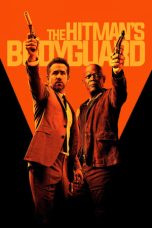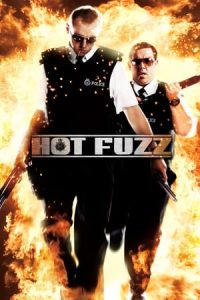- Source: Bud Anderson
Clarence Emil "Bud" Anderson (January 13, 1922 – May 17, 2024) was an officer in the United States Air Force and a triple ace of World War II. During the war he was the highest scoring flying ace in his P-51 Mustang squadron.
Toward the end of Anderson's two combat tours in Europe in 1944 he was promoted to major at 22, a young age even for a highly effective officer in wartime. Afterward, he became a test pilot and a fighter squadron and wing commander, serving a combat tour in the Vietnam War.
Anderson retired as a full colonel in 1972, after which he worked in flight test management for McDonnell Douglas. A member of the National Aviation Hall of Fame, he continued to speak at aviation and military events well into his 90s. He received an honorary promotion to brigadier general in 2022.
Early life
Anderson was born on January 13, 1922, in Oakland, California, and raised on a farm near Newcastle, California. He graduated from Placer Union High School in Auburn, California. In high school, he played football and basketball. He was introduced to aviation at Oakland Municipal Airport. He was working at the Sacramento Air Depot during the Japanese attack on Pearl Harbor on December 7, 1941.
Military career
In January 1942, shortly after Japan attacked Pearl Harbor, Anderson enlisted in the United States Army as an aviation cadet. He completed Primary Flight Training at Lindbergh Field, San Diego, and his Advanced Training at Luke Field, Arizona. He received his wings and commission as a second lieutenant in the United States Army Air Forces at Hamilton Field, California in September 1942.
Anderson began flying Bell P-39 Airacobras with the 329th Fighter Squadron of the 328th Fighter Group at Hamilton Field and then at the Oakland Municipal Airport, from September 1942 to March 1943. He was later assigned to the 363rd Fighter Squadron of the 357th Fighter Group at Tonopah, Nevada, in March 1943, moving to various bases in California from May to October 1943, then at Casper, Wyoming, from October to November 1943, and finally deploying to England in November 1943.
= World War II
=The 357th Fighter Group was stationed at RAF Leiston, and the group was equipped with the North American P-51 Mustang in January 1944. Anderson flew his first mission on February 5. On March 3, he shot down a Messerschmitt Bf 109 that was attacking a straggling B-17 Flying Fortress northwest of Hanover, his first aerial victory. On April 11, he shot down another Bf 109, his second aerial victory. On the same mission, he and two other members of his flight took turns in shooting down a Heinkel He 111 bomber that was landing at an airfield in Hanover, resulting in the bomber crashing, crediting the three of them with the shared aerial victory. Anderson continued to score aerial victories until he shot down a Bf 109 over Frankfurt on May 12, his fifth aerial victory, thus making him a flying ace. Before the end of May, he destroyed three more enemy aircraft.
On June 29, Anderson led his fighter squadron on a bomber escort over Leipzig. Over the target, the squadron encountered eight Focke-Wulf Fw 190s attempting to attack the bomber formation. He shot down the lead Fw 190 then, in the subsequent dogfight, shot down two more Fw 190s, for a total of three. In July, after scoring his twelfth aerial victory, he took leave and returned to the United States.
That fall, Anderson returned to 357th FG and on November 27, shot down two Fw 190s over Magdeburg and forced another to crash land as he attempted to shoot it, crediting him with two aerial victories and one probable in the mission. On December 5, while leading a fighter escort of bombers over Berlin, the escort was attacked by a formation of 20 Fw 190s and in the dogfight, he shot down two, his final aerial victories.
Anderson flew two tours of combat against the Luftwaffe in Europe while with the 363d Fighter Squadron of the 357th Fighter Group, based at RAF Leiston, England, and was the group's third leading ace with 16+1⁄4 aerial victories. The others only flew one tour so they had less time in the air. His first P-51 Mustang (P-51B-15-NA AAF Ser. No. 43-24823) and his second (P-51D-10-NA Mustang, AAF Ser. No. 44-14450 B6-S), both nicknamed Old Crow (after the whiskey of the same name), carried him safely through 116 missions without being hit by fire from enemy aircraft and without Anderson ever having to turn back for any reason.
The 357th group was also known as the Yoxford Boys.
= Post-war
=Anderson returned to the U.S. in January 1945, serving at Perrin Field, Texas, until that October, when he was assigned as a recruiter in Ohio. He served as a test pilot at Wright Field from May 1948 to February 1953. During this time, he took part in the FICON project, a concept to increase the effective combat radius of jet fighters by attaching them to a propeller-driven bomber, one hooked up to each wingtip. The hope was that it would not only increase fuel efficiency and effective range, but also allow the bomber to carry its own fighter escort deep into enemy territory.
Anderson attended Air Command and Staff College at Maxwell Air Force Base, Alabama, from September 1954 to August 1955, and then was assigned as Director of Operations for the 58th Fighter-Bomber Wing at Osan Air Base, South Korea, from August 1955 to February 1956 and commander of the 69th Fighter-Bomber Squadron at Osan, from February to August 1956.
Anderson continued as a test pilot and was assigned as Assistant Chief and then Chief of the Flight Test Operations Division at Edwards Air Force Base from November 1957 to August 1962. He attended the Army War College at Carlisle Barracks, Pennsylvania, from August 1962 to July 1963. From August 1965 to December 1967, he was stationed at Kadena Air Base in Okinawa where he served as deputy director, director of operations and commander of the 18th Tactical Fighter Wing.
After serving another tour at the Air Force headquarters in the Pentagon until December 1969, Anderson commanded the 355th Tactical Fighter Wing, an F-105 Thunderchief unit, during its final months of service in the Vietnam War, from June to December 1970. Stationed at Takhli Royal Thai Air Force Base, he flew 25 missions in strikes against enemy supply lines and later was in charge of closing the base when 355th TFW was inactivated.
Anderson retired as a colonel in March 1972. He was decorated 25 times for his service to the United States, during which he flew over 100 types of aircraft and logged over 7,000 hours. He was a close friend of Brigadier General Chuck Yeager during and after the end of World War II, where both served in the 357th Fighter Group.
Personal life and death
Anderson married Eleanor Cosby, on February 23, 1945. She died on January 30, 2015, in Auburn, California, just four days before her 92nd birthday, and is buried at Arlington National Cemetery. They had two children.
After his retirement from active duty as a colonel, Anderson became the manager of the McDonnell Aircraft Company's Flight Test Facility at Edwards AFB, serving there until 1998. In 1990, he cowrote the book To Fly & Fight—Memoirs of a Triple Ace.
In 2005, Anderson appeared on pilot episode of the History Channel series Dogfights. In the episode titled 'The Greatest Air Battles' features his June 29, 1944 mission, with Anderson recounting his experience of the mission.
On July 19, 2008, Anderson was inducted into the National Aviation Hall of Fame. In 2013, he was inducted into the International Air & Space Hall of Fame at the San Diego Air & Space Museum. A life-size bronze statue of him was installed at the Auburn Municipal Airport.
In 2015, he along with other flying aces received the Congressional Gold Medal, in recognition of "their heroic military service and defense of the country's freedom throughout the history of aviation warfare."
Anderson turned 100 in January 2022.
His hometown Auburn honored him with a grand celebration. He was the last living American triple flying ace of World War II. On December 2, he was promoted to the honorary rank of brigadier general by General Charles Q. Brown Jr., the Air Force chief of staff at the Aerospace Museum of California.
Anderson died in his sleep at his home in Auburn, California, on May 17, 2024, at the age of 102.
Aerial victory credits
SOURCES: Air Force Historical Study 85: USAF Credits for the Destruction of Enemy Aircraft, World War II
Awards
Anderson earned 25 awards, including:
Command pilot
American Fighter Aces Association life member
Fellow, Society of Experimental Test Pilots
Aerospace Walk of Honor, 1993
Crystal Eagle Award, 2011
Congressional Gold Medal, May 2015
Bibliography
Anderson, Colonel Clarence "Bud" with Joseph P. Hamelin. To Fly and Fight, Memoirs of a Triple Ace, Pacifica Military History, Library of Congress. ISBN 0-935553-34-7
References
= Notes
== Citations
=External links
To Fly and Fight – C.E. "Bud" Anderson's Official website
Biography at acepilots.com
Images including contemporary photos and paintings
Auburnjournal.com
Kata Kunci Pencarian:
- Bud Spencer
- Capri Anderson
- In the Park
- The Champion (film 1915)
- The Life Aquatic with Steve Zissou
- Perebakan tornado Tupelo–Gainesville 1936
- Mia Khalifa
- Brazzers
- Dogma (film)
- Lana Rhoades
- Bud Anderson
- Father Knows Best
- Bud (disambiguation)
- Billy Gray (actor)
- Bud Spencer
- Bud Anderson (baseball)
- Anderson (surname)
- William Gray
- Clarence Anderson
- Elinor Donahue
Pokémon Detective Pikachu (2019)
Parasite (2019)
Harold & Kumar Escape from Guantanamo Bay (2008)
Up (2009)
Hot Fuzz (2007)
Once Upon a Time… in Hollywood (2019)
No More Posts Available.
No more pages to load.














